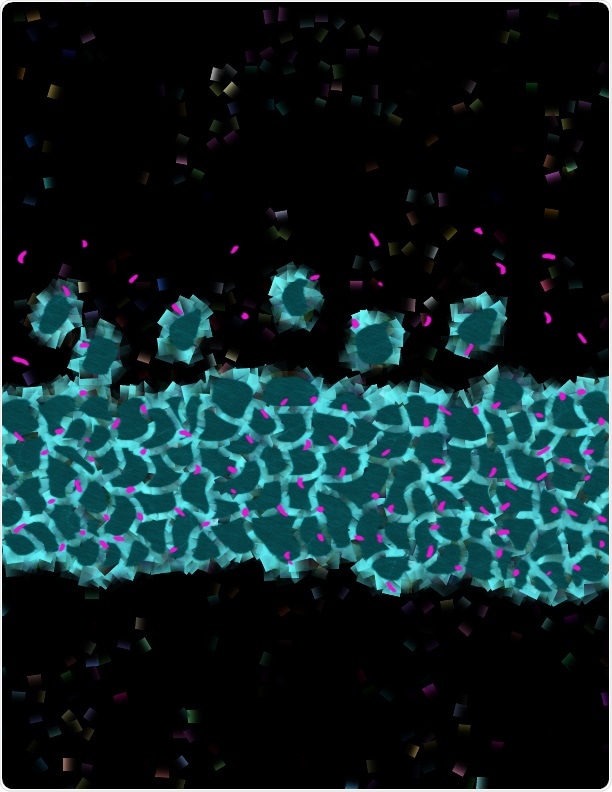Primary cilia are structures that act like television antennas for cells to identify signals and occur in fewer numbers in mice affected by Fragile X syndrome since birth, stated scientists from the University of Texas Health Science Center at San Antonio (UT Health San Antonio).

Green-colored newborn neurons with primary cilia in red. Image Credit: Lee laboratory.
The results of the study were published in the Stem Cell Reports journal on July 30th, 2020.
The genetic disorder Fragile X syndrome is usually accompanied by intellectual disability ranging from mild to severe. The affected children often suffer from autism spectrum disorders.
Interpreting the function of primary cilia deficits in autism and Fragile X syndrome and creating novel therapeutics to boost their numbers may help reverse these neurodevelopmental diseases, stated Hye Young Lee, PhD, the study’s senior author from UT Health San Antonio.
The researchers targeted primary cilia situated in the structure of the brain known as the dentate gyrus. The dentate gyrus is part of the hippocampus—a memory and learning command center. The reduced number of primary cilia was particularly observed in the dentate gyrus, noted Dr Lee and her collaborators.
She stated that the dentate gyrus is one of the two structures of the brain comprising neuronal stem cells. The dentate gyrus acts as a kind of nursery for newborn neurons, which rely on the primary cilia to allow their maturation.
According to Dr Lee, primary cilia have not been associated with Fragile X syndrome before.
If we get to know how the primary cilia work in the newborn neuron and how they contribute to Fragile X syndrome, the next step would be to promote them. There are drugs to do that, and they could be potential therapies for Fragile X syndrome and other neurodevelopmental disorders, because there are multiple studies showing that neurodevelopmental disorders and autism can be reversed in adults.”
Dr Bumwhee Lee, Assistant Professor, Department of Cellular and Integrative Physiology, University of Texas Health Science Center at San Antonio
Source:
Journal reference:
Lee, B., et al. (2020) Primary Ciliary Deficits in the Dentate Gyrus of Fragile X Syndrome. Stem Cell Reports. doi.org/10.1016/j.stemcr.2020.07.001.